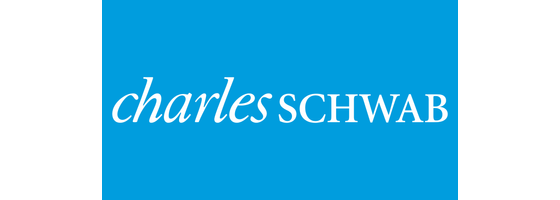Custodial Roth IRA: What Is It And Where To Open One

Our evaluations and opinions are not influenced by our advertising relationships, but we may earn a commission from our partners’ links. This content is created by TIME Stamped, under TIME’s direction and produced in accordance with TIME’s editorial guidelines and overseen by TIME’s editorial staff. Learn more about it.
The earlier your child starts saving, the longer their money has to benefit from compound interest. A tax-advantaged custodial Roth individual retirement account (IRA) is a great way to help jumpstart your child’s retirement savings, and your child may if they have earned income. Our guide to custodial Roth IRAs will help you determine if this option is right for your family.
A custodial Roth IRA is a tax-advantaged retirement account that is controlled and funded by an adult custodian on behalf of a child until the minor reaches a certain age, usually the age of majority (18, 19, or 21), but sometimes as high as 25, depending on the state.
A Roth IRA account offers the benefit of tax-free growth and tax-free withdrawals when certain rules are met in retirement. Because taxes are paid prior to funding the account, contributions can be withdrawn tax-free at any time for any reason.
A custodial Roth IRA is opened by an adult—the custodian—on behalf of a child. The custodian controls the account, including all decisions about contributions, investments, and distributions, and will receive all tax documents and account statements until the child reaches the age of majority.
The child is the beneficial account owner, and funds distributed from the account can only be used for their benefit. Upon reaching the designated age, the child assumes control of the account, and it will function as a regular Roth IRA.
If you’re looking for the best custodial accounts for minors, it’s important to understand the differences among the various options. Two other types of custodial accounts for minors include:
A custodial traditional IRA functions in the same way as a custodial Roth IRA: The adult custodian controls the account until the child reaches the age of majority. The difference is in the mechanics. A traditional IRA allows pretax income to grow tax-deferred, as with a 401(k).
Essentially, you get a contribution deduction and do not have to pay tax in the present tax period. In the future, however, withdrawals are subject to taxes. They are also subject to an early withdrawal penalty of 10% if funds are taken out prior to age 59½ unless an exception applies.
The Uniform Transfer to Minors Act (UTMA) is now law in all 50 states and establishes the UTMA account. This account allows an adult to transfer assets to a minor without creating a formal trust. The assets in the account can only be used for the child’s benefit, and they are controlled by a custodian until the minor reaches the age of majority.
UTMA supersedes an earlier law, the Uniform Gift to Minors Act (UGMA), that established UGMA accounts, only allowed gifts from living people, and restricted investments to financial assets, such as cash, stocks, bonds, and mutual funds. A UTMA account can also hold real assets, also known as “tangible assets,” such as real estate, collectibles, goods, and machinery. It also allows the gift to happen through an inheritance.
Here are some of the best custodial Roth IRA accounts available today:
| Best for | Fees | Minimum investment | Promotional Offer | |
|---|---|---|---|---|
Robinhood | Matching contributions (1% for basic and 3% for Gold) | No fees for a basic account; a Robinhood Gold subscription is $5 monthly or $50 annually (after a 30-day free trial) | $20 | IRA transfers and 401(k) rollovers also earn 3% for Gold members only (offer expires April 30, 2024) |
Empower | Do-it-yourself investors | No maintenance fees | None | None |
JP Morgan | Current Chase customers | No maintenance fees; $75 account closing fee | None | Cash bonuses of up to $700 depending on your opening deposit(offer expires July 19, 2024) |
Charles Schwab | Beginner investors | No maintenance fees | None | None |
Robinhood Retirement offers an extra 1% matching contribution on your custodial Roth IRA contributions. This bumps up to 3% if you participate in its Robinhood Gold membership. The company is currently running a promotion through April 30, 2024, on IRA transfers and 401(k) rollovers, which also receive a 3% match if you have a Gold subscription.
Matching is a common feature in workplace retirement accounts, but it is a novelty for Roth IRAs. Every extra dollar in the Roth IRA is valuable because your child can benefit from tax-free growth and compound interest.
Robinhood has no management fees for its basic account. A Gold subscription is $5 monthly or $50 annually (after a 30-day free trial). You must invest a minimum of $20 in your recommended portfolio.
Empower’s custodial Roth IRA has no minimum opening balance and no account opening or maintenance fees. You can track your financial progress with Empower’s online tools and resources. With its premier IRA, you also receive access to professional guidance from a financial advisor, all with no setup, administrative, or account closing fees.
JP Morgan’s custodial Roth IRA has no minimum opening balance, and there are no account opening or maintenance fees. There is a $75 account closing fee if you terminate the Roth IRA. JP Morgan is ideal for existing Chase customers because the Chase Mobile app combines all your financial and investing accounts into one location.
JP Morgan is currently running a promotion where you can get up to $700 bonus cash when you open a Roth IRA by July 19, 2024. The bonus cash amounts per opening deposit are:
Charles Schwab’s custodial Roth IRA has no minimum opening balance, and there are no account opening or maintenance fees. The company has education and training resources for new investors, and its customer service department is top notch.
You will need to take the following steps to open a custodial Roth IRA.
The biggest decision you’ll need to make when opening a custodial Roth IRA is choosing a broker. Each one has benefits and drawbacks in the form of promotional incentives, matching contributions, financial advice and assistance, and possible ongoing maintenance fees. It’s important to choose one that has the set of criteria you deem most important.
When you open a custodial Roth IRA for a child, you become the custodian, and the child is named as the beneficial account owner. Before you can fund the account, you’ll need identifying information about yourself and your child, such as a Social Security number or other Taxpayer Identification Number (TIN). Although it is rare, some brokers have a minimum investment to open an account.
A custodial Roth IRA can invest in stocks, bonds, mutual funds, cash, commodities, and other assets. As a child is far from retirement age, it is the perfect time to take advantage of equity investments that offer more potential for long-term growth.
Don’t neglect the account once you open it. Be sure to make regular contributions up to the annual limit. This will maximize your child’s tax-advantaged savings.
The contribution and distribution rules for a custodial Roth IRA are the same as those for a regular Roth IRA.
For 2024, custodial Roth IRAs are limited to $7,000 or the child’s earned income for the year. If your child earns $4,000 in the year, the maximum contribution they can make is $4,000. If your child earns $10,000 in the year, the maximum contribution they can make is $7,000.
According to the Internal Revenue Service (IRS), earned income is any taxable income the child has received from an employer or through gig economy work, such as babysitting, delivery driving, or lawn mowing.
As with a regular Roth IRA, a custodial account allows you to withdraw contributed funds at any time, for any reason, without tax or penalty. Withdrawals of amounts beyond contributed funds—i.e., earnings on your contributions—are taxable unless they meet the rules for qualified distributions.
Earnings can be withdrawn tax and penalty-free if the Roth IRA has been open for at least five years and the account owner is at least 59½ years old. The early withdrawal penalty is 10%, but there are a few exceptions. For example, up to $10,000 can be taken out to purchase a first home.
To qualify for a custodial Roth IRA, your child must have earned income as defined by the IRS, as well as a Social Security number or a TIN.
A custodial Roth IRA is a great way to set your child up for retirement as early as possible. The longer you save, the more compound interest you can take advantage of.
Of course, it may be hard to convince teenagers to part with their hard-earned money for something as ephemeral as long-term gain. Still, as long as your child has earned income, the source of the contributions doesn’t matter. You or another adult could contribute up to the limit yourself as a reward for your child’s hard work.
Another option is to match your child’s contributions to the custodial Roth IRA up to the limit. For example, if your child earns $5,000 in the year and contributes $2,500 to the custodial Roth IRA, you could match the $2,500 to max out the $5,000 in allowable Roth IRA contributions for the year.
You can open a custodial Roth IRA for a child with earned income. The child will also need a Social Security number or a TIN. The earlier you start saving, the longer you have for tax-free growth thanks to compound interest.
In 2024, the maximum you can contribute to a custodial Roth IRA is $7,000 or the child’s earned income, whichever is lower.
It depends on the state in which they live. Once a minor reaches the age of majority (18, 19, or 21, depending on the state), the assets from the custodial Roth IRA will be transferred to their own name. (Some states allow a custodian to specify an age beyond the majority, as high as 25.) The account will then function like a regular Roth IRA, and the young adult will fully control it.
Account maintenance fees, or “custodial fees,” are sometimes charged to administer the Roth IRA. Not every provider does it, but, if there is a fee, it typically ranges from $25 to $50 per year.
The information presented here is created by TIME Stamped and overseen by TIME editorial staff. To learn more, see our About Us page.






